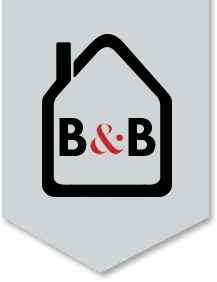Evolution of House Size in America
Why bigger is not always better
Why bigger is not always better
What is Zoning? Learn everything you will need to know!
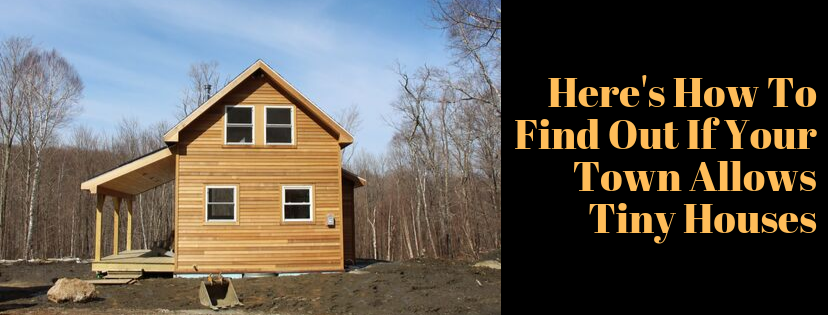
Zoning codes for many municipalities can be found on your town’s website or on ecode360.com.
Here are some helpful search terms:
If you’re hoping to put a tiny house ON WHEELS either on its own property or on a property with other buildings:
If you’re hoping to build a backyard cottage ON A FOUNDATION:
If you’re hoping to build a small house ON A FOUNDATION on its own piece of land:
Appendix Q for tiny houses on foundations:
If you’re hoping for a tiny or small house ON A FOUNDATION, look into whether your state has adopted Appendix Q for tiny houses into its building code. Appendix Q is a set of safety standards for houses on foundations that are 400 sq. ft. and under, basically providing standards for how lofts and ladders are built. More info on Appendix Q for Tiny Houses here. If your state hasn’t adopted Appendix Q, that doesn’t necessarily mean you can’t build small: it just means you’ll have to follow your state’s existing building code for lofts and ladders, and the other details in the Tiny House Appendix.
On January 1, 2020, Massachusetts and California simultaneously will join Maine, Idaho, Oregon and Georgia as the first six states to adopt the Tiny House Appendix into their building code. Many other states are in the process of adopting the Tiny House Appendix. The Tiny Home Industry Association has updates on Appendix Q across the United States.
Please note: there may be more lenient rules depending on whether your tiny house will be used seasonally, as a “guest house”, “camper”, or “cabin” rather than as a full-time, permanent residence. If you’ll only be using your tiny house sometimes, residential zoning laws and building codes may not apply. Check in with your municipality if this is the case.
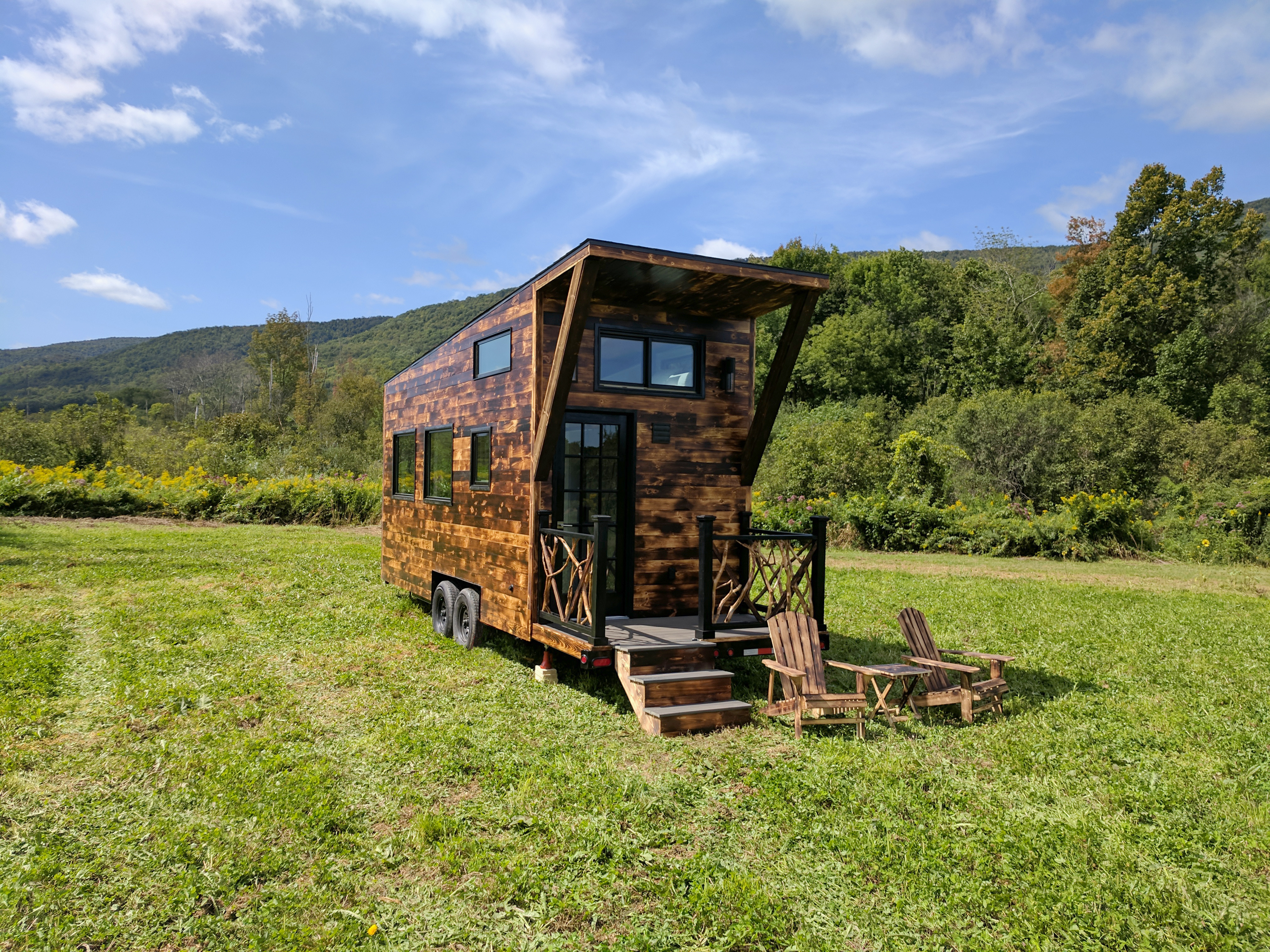
Photo: Arcadia Tiny House on Wheels. This tiny house can travel, and it’s certified as an RV. It’s currently being used as a guest house at Woodlife Ranch; it isn’t someone’s permanent home.
If you can’t find any info on tiny houses in the town’s zoning but would like to know whether a tiny house on wheels or on a foundation would be legal to live in full-time, send a quick email to your town’s building inspector or zoning board (you can find their contact info on your town’s website).
Be sure to include the following information:
They’ll be able to tell you whether tiny houses are legal.
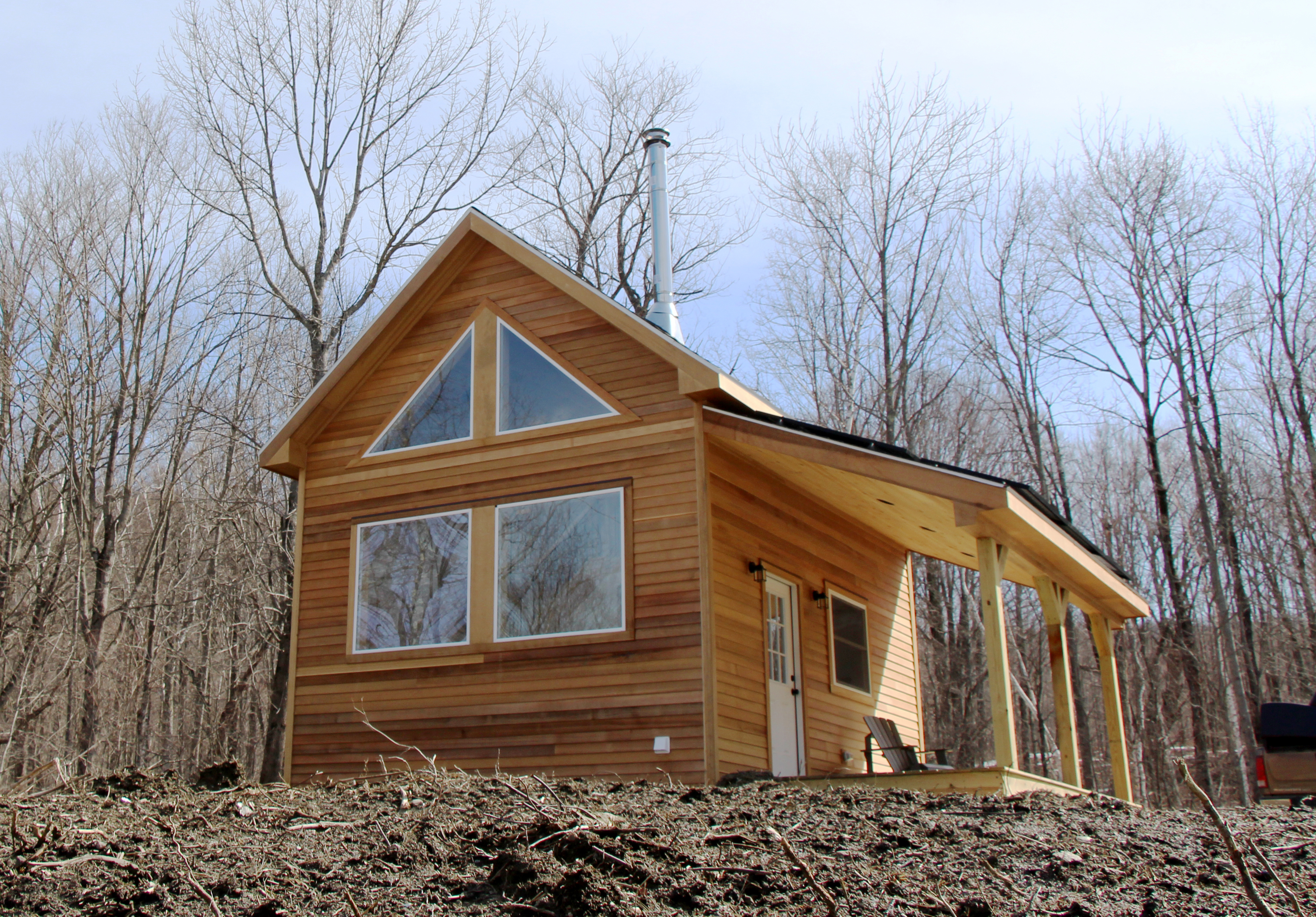
Photo: Green River Small House. This house was built on-site, piece by piece, and it is compliant with local zoning bylaws and state building code. It’s being used as a permanent, year-round home.
If tiny houses are not currently included in the zoning bylaws, your zoning board will be able to advise you whether it’s worth pursuing a change to the zoning bylaws. Generally this process takes a while, and the zoning board will guide you through it. You don’t have to be an expert to request a zoning change, just an interested citizen! Be prepared with knowledge of how having tiny houses would help your town or city. Here are some examples, which you can tailor to the specific needs of your municipality:
It’s best to do this before you have your tiny house built. This way, you can be flexible in your design, making sure it conforms with the standards the town creates.
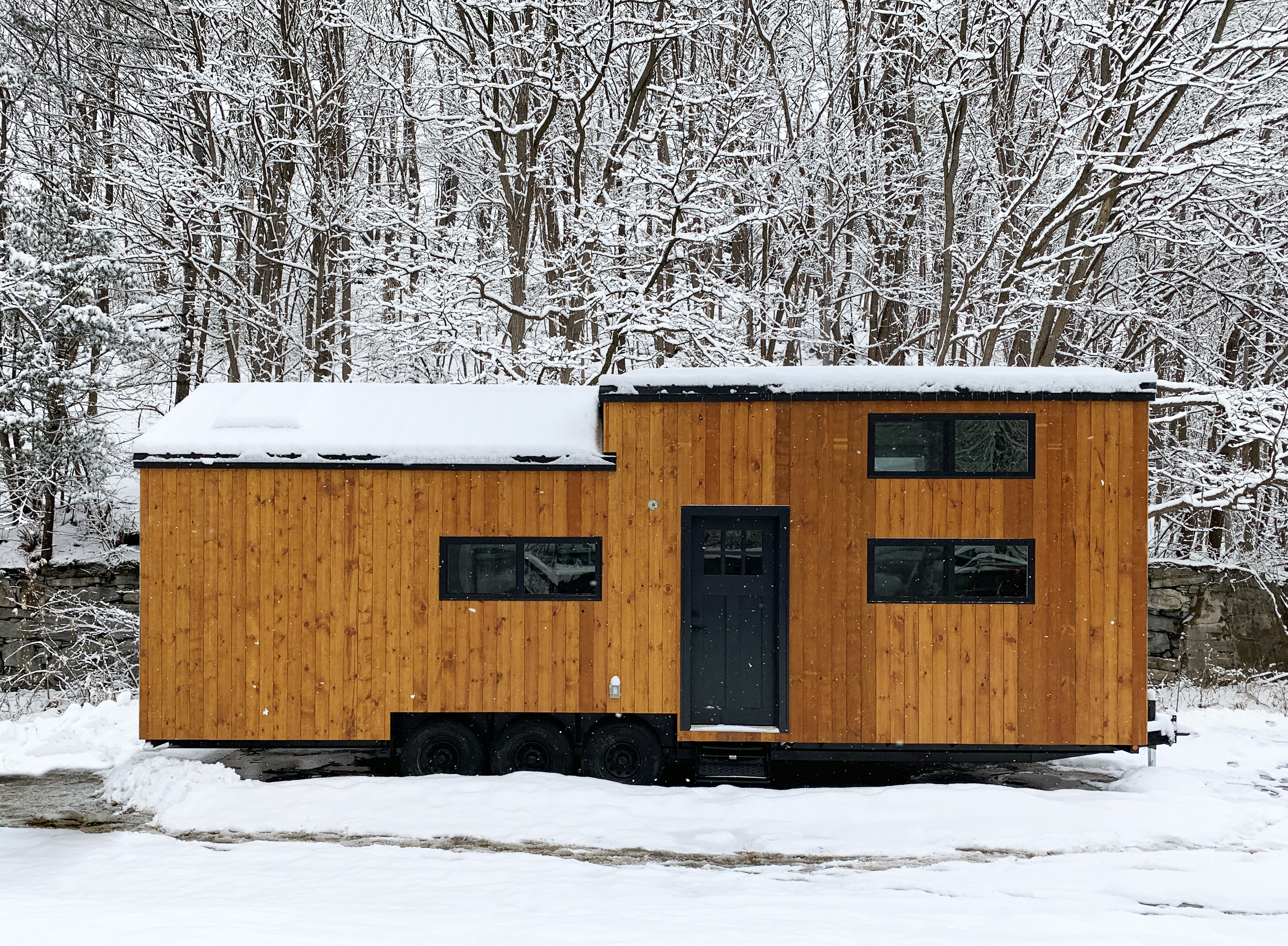
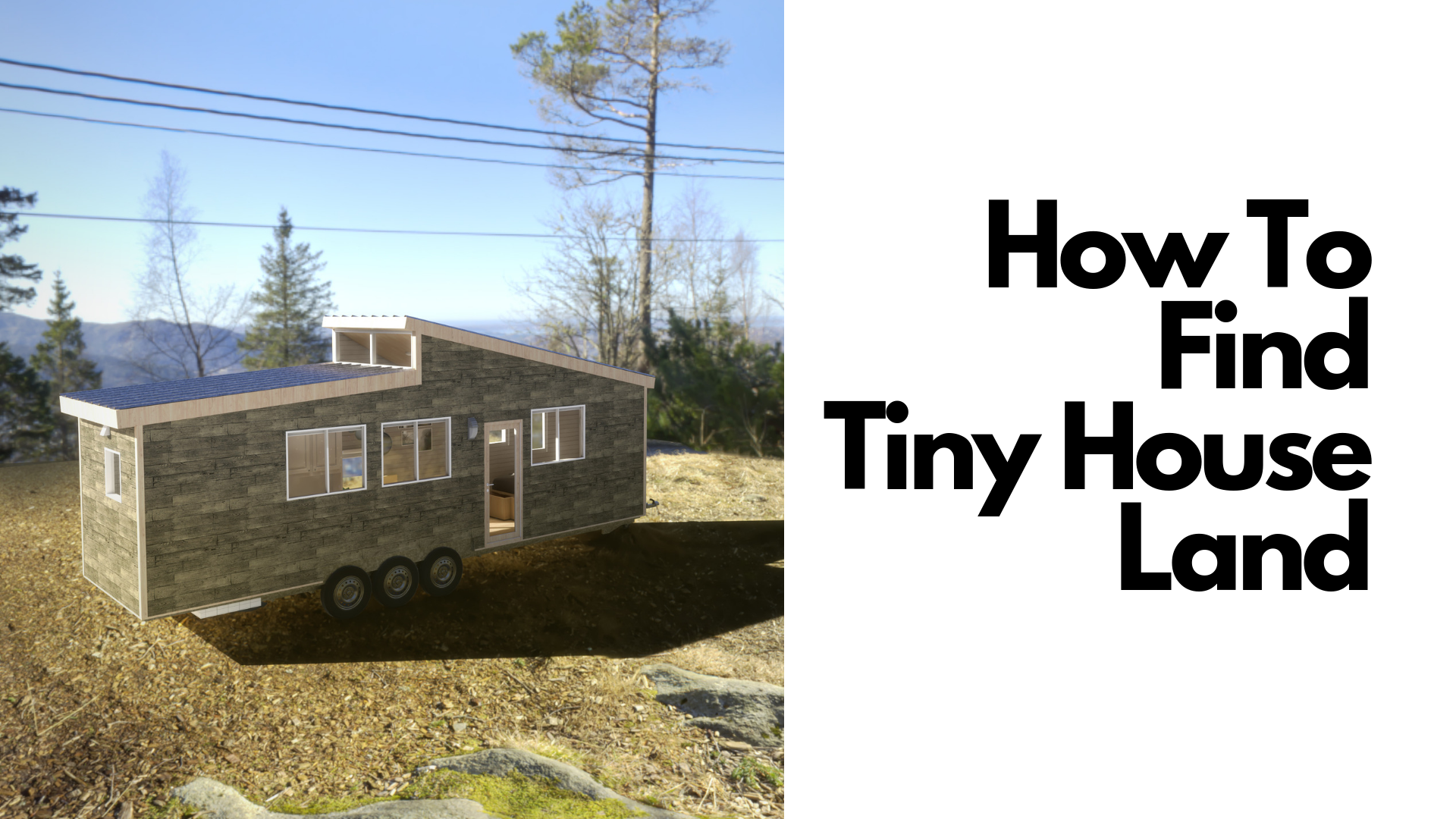
Before having your tiny house built, you should already have a spot to put it lined up. You don’t want to end up with a tiny house and nowhere to put it!
Because tiny houses are a relatively new phenomenon, most municipalities have never had anyone approach them to ask whether they can live in a tiny house. Therefore, most municipalities don’t have any bylaws saying you can or can’t live specifically in a tiny house. Use this guide to learn what you’ll need to know to get the perfect parking spot for your tiny house.
The 8 Steps To Buying A Tiny House: Everything You’ll Need To Do To Go Tiny
This post covers your entire tiny house buying process, and the first and most important step is finding a place to put it. Whether you’ll be buying or renting land, familiarize yourself with the tiny house buying process and how long it’ll take, before starting to your land search.
Here, you’ll learn how to find and read your town or city’s zoning laws to find out whether there are already rules for tiny houses, whether on foundations or on wheels. If your town doesn’t have laws pertaining to tiny houses, you’ll learn how to approach your town to ask. Importantly, you’ll also learn what to look for in the land, including hookups for fresh water, waste water, and power.
Where Can I Put My Tiny House? A Near-Comprehensive List Of Tiny House Parking Resources
Now that you know how to look for zoning laws and get permission to live in your tiny house, you’ll need to do some networking to find a spot for it! Facebook and Meetup are both great networking sites for tiny house enthusiasts, and this list links to Facebook and Meetup groups about tiny houses in almost every state. In addition to networking on tiny house specific sites and groups, advertise on local forums on Facebook, Craigslist, and community bulletin boards asking for those willing to rent out or sell land for a tiny house. The sooner you find land the sooner you can get started with the build. Good luck, and let us know how your land search goes!
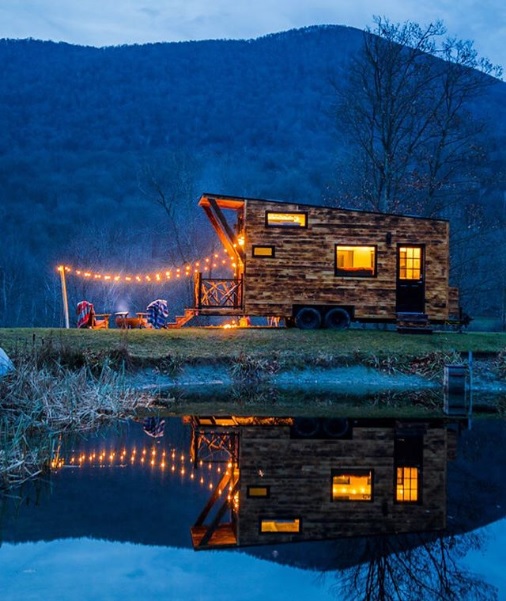
Arcadia Tiny House at Woodlife Ranch. Photo by Kyle Finn Dempsey
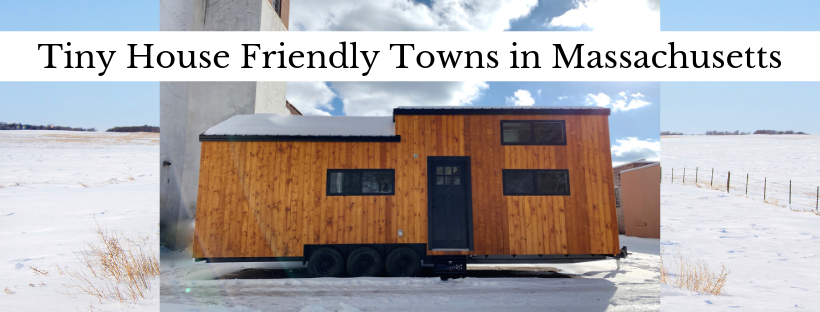
With your help, we’re compiling a list of every city and town in Massachusetts and its attitude toward tiny houses on wheels and on foundations. This is part of a larger initiative by the American Tiny House Association to gather tiny house information for every state in the US. (Katie at B&B Tiny Houses is also ATHA’s northeast regional director.)
As you’ll see in the chart, most cities and towns don’t already have a policy on tiny houses, whether on foundations or on wheels, so their stance on tiny houses is currently unknown. Municipalities probably won’t consider whether to allow tiny houses unless someone brings it up with them! As we’ve seen in Nantucket and Auburn, all it takes is one person to ask.
Tiny House Appendix Q has been adopted in Massachusetts, effective January 1, 2020. Appendix Q: Tiny Houses provides building safety standards for houses on foundations that are 400 sq. ft. and under. However, the appendix doesn’t mean you can build a tiny house on a foundation wherever you want in Massachusetts: you’ll still have to adhere to your municipality’s zoning code. Here’s more info on the Tiny House Appendix.
If you have spoken with your municipality’s government (zoning board, building inspector, or someone else) about tiny houses on wheels or on foundations, we would love to add your info to the list. There’s even a column for rumors, if you’ve heard a town might be amenable to tiny house living but haven’t spoken with them directly yourself.
Zoning codes for many municipalities can be found on your town’s website or on ecode360.com.
If you haven’t spoken with anyone in your city or town government yet but would like to know whether a tiny house on wheels or on a foundation would be legal, send a quick email to your town’s zoning board (you can find their contact info on your town’s website).
Be sure to include the following information:
Someone on the zoning board be able to tell you right away whether tiny houses are already approved. If tiny houses are not currently mentioned in the zoning bylaws, they’ll be able to advise you whether it’s worth pursuing a change.
If you have info on a specific municipality, please email [email protected] and we’ll get your info added to the list.

Auburn’s Town Meeting Warrant can be read here. The tiny house articles are #33 and #34; you’ll read more about the distinction between the two articles in the interview. The approval process isn’t over yet: next, it’ll be sent to the Massachusetts Attorney General Maura Healey (who visited the B&B Tiny Houses workshop last year) to be signed into law for the town of Auburn.
We are so grateful to Dominique for pitching the idea of tiny houses to her town, and in doing so, paving the way for others to do the same in their own municipalities.
First, what’s the background story? What originally led you to ask your town for permission to put a tiny house in your yard?
Did you originally intend to get permission solely for tiny houses meant for caregiving, or was that restriction suggested by the planning board or another entity?
What was the process? How long has this process taken so far? What are the next steps for Article 33 to come to fruition?
I understand you and your husband are builders and plan to build your own tiny house. Did the town of Auburn ask you to build it (or prove that it has been built) to a particular set of standards or code?
Before now, have you ever been involved in a political or government process? Did you reach out to others for help or guidance along the way? Are there any other Auburn residents you know of who are interested in having their own tiny houses?
What advice would you have for others looking to ask for permission to have a tiny house in their own municipality?
Finally, do you have images you’d like to share?
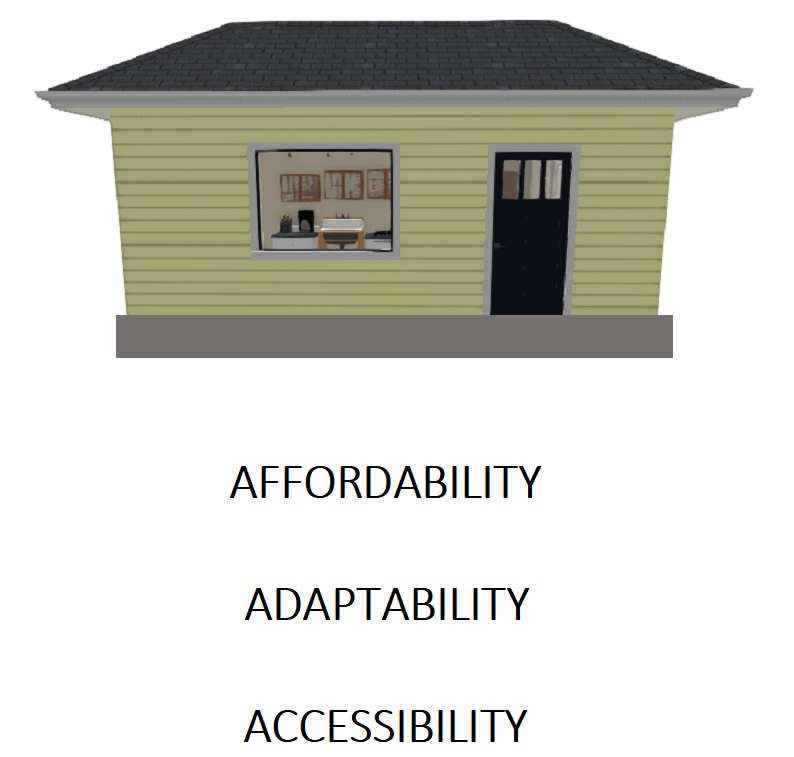
Dominique’s Self-Designed Tiny House For Her Grandmother
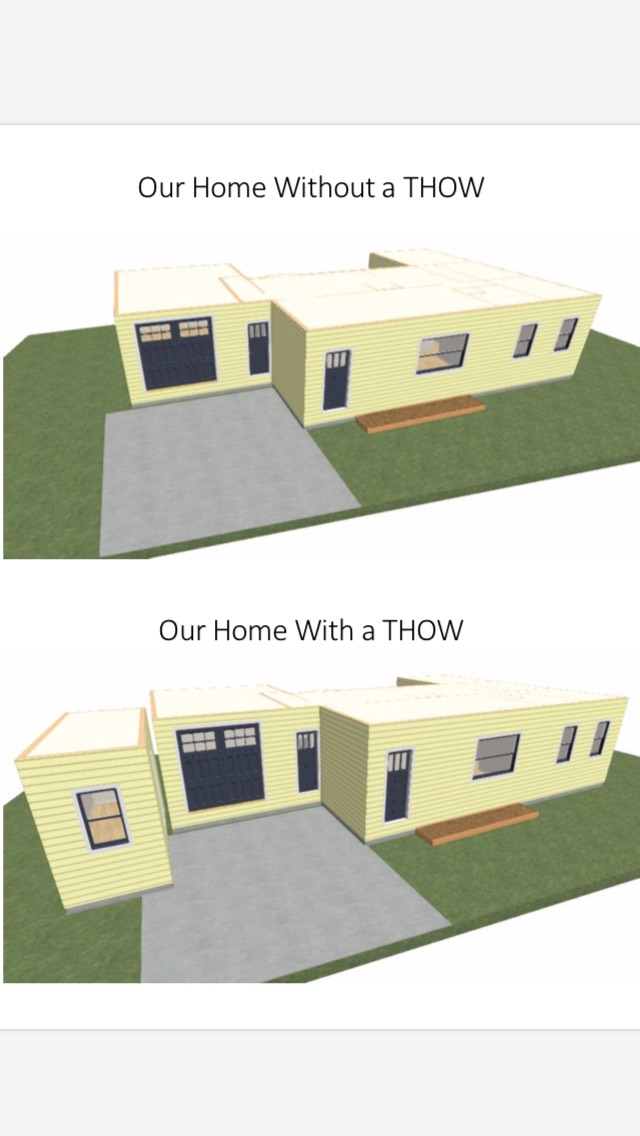
Rendering: Dominique’s Self-Designed Tiny House Next To Her Home
Last week’s public hearing in Great Barrington, MA addressed using tiny houses on wheels as backyard cottages. (If you haven’t already seen it or need a refresher, refer back to this blog post).
After the meeting, I spoke with Jonathan Hankin who is the president of the Planning Board. Here’s his recap:
As a side note, the Massachusetts Attorney General, Maura Healey, visited the B&B Tiny Houses workshop last year and said, in front of many members of the press, that she feels tiny houses are a good affordable housing option. She has also signed the Nantucket, MA zoning bylaw allowing tiny houses, so we feel good about Atty. Gen. Healey signing Great Barrington’s as well.
-K. Jackson
Pictured from left: B&B Tiny Houses Owners Chris St. Cyr, Jason Koperniak, Mitch Bressett, and Massachusetts Attorney General Maura Healey outside the Arcadia Tiny House. Photo from iBerkshires.com.
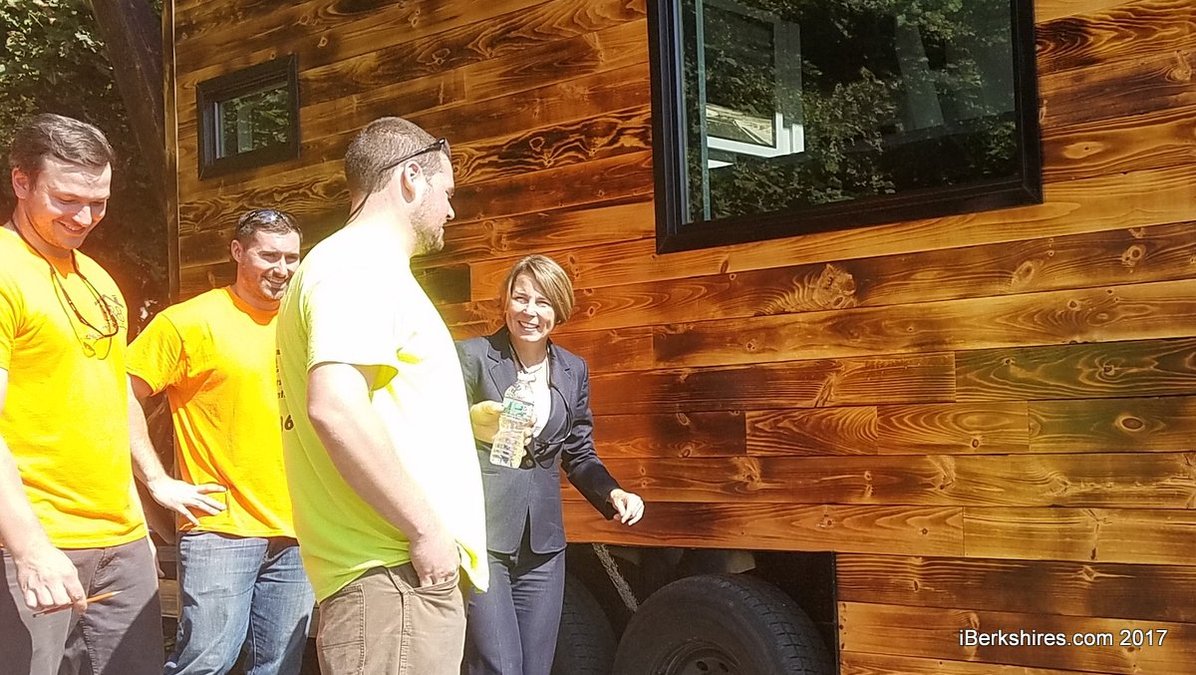
The Thursday meeting agenda includes a Citizen’s Speak Time, where those who live in Great Barrington can share their thoughts. Those who don’t live in Great Barrington but would like to show up in support of legal tiny houses may also attend the meeting.
This meeting will address movable tiny houses. Tiny houses that are on a foundation are already permitted as an ADU under the current bylaw and would need to meet the stretch code adopted by GB. The planning board is also seeking to increase the allowable number of ADUs to two.
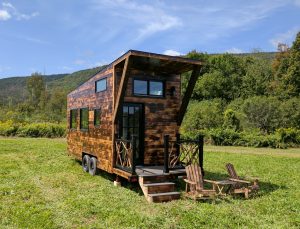
To Section 11.0 Definitions add:
Movable Tiny Houses (MTH)
A structure intended for the separate, independent living quarters of one household for year-round residence that meets all of the following:
(a) Is licensed and registered with the Massachusetts Registry of Motor Vehicles;
(b) Meets the American National Standards Institute (ANSI) 119.5 requirements, and certified by a qualified third party inspector for ANSI compliance;
(c) Cannot move under its own power;
(d) Has not less than 150 and no more than 430 square feet of habitable living space, excluding lofts;
(e) Is designed and built using conventional residential building materials for windows, roofing and exterior siding.
ACCESSORY DWELLING UNIT: a subordinate dwelling unit on the same lot as a primary single family or two-family residential use, with provisions for independent cooking, living, sanitation and sleeping. (Add) A Movable Tiny House (MTH) connected to electricity, water, and sewer or septic that has its chassis, wheels and hitch concealed shall be considered an accessory dwelling unit.
(This proposed language may have been updated by the time the meeting takes place).
Please attend:
Read the Meeting Agenda here.
This is a question we get almost every day. Often, your town won’t have already considered whether to allow tiny houses as year-round residences: it just takes someone to ask.
Start out by looking at the zoning laws in your own town. B&B Tiny Houses are built to RVIA standards, which legally classifies them as RVs. If your town or city doesn’t allow RVs, then you can either ask your planning board or go to another town.
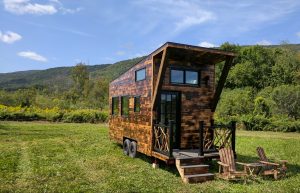
Networking is a common way people find spaces for their tiny houses: start out on Facebook, Meetup, or in person at a tiny house festival. By using personal networking rather than tiny house websites, you might find someone with land willing to rent a space to you who hasn’t previously heard about tiny houses or considered renting a small piece of their land for one. Try Facebook Groups that are tiny house specific, or just general community groups. Before agreeing to rent someone’s land, though, make sure both you and the potential landlord are aware of the tiny house legalities in that community.
Search Tiny House Villages: RV Parks, villages, and communities across the United States and Canada that allow tiny houses.
Try It Tiny: Short-term and long-term rental lots, often on privately owned property, for your tiny house as well as tiny houses for rent.
This list was updated in April 2019 by adding new groups, deleting now-defunct groups, and improving formatting. Did we miss anything? Let us know via email: [email protected].
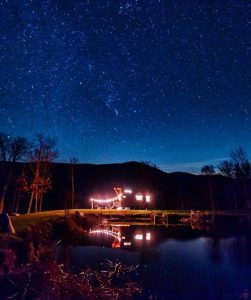 You’ve found beautiful land, but can you put a tiny house on it?
You’ve found beautiful land, but can you put a tiny house on it?Although many people dream of a completely off-grid tiny house in the middle of nowhere, you’ll still need to find a way to get water and power to your house. The less distance from the road, the less expensive it’ll be to have power and water lines installed.
For electricity, the cheapest and easiest option is to plug into an existing power source. Others choose to power their homes with solar power. Click here to learn more about solar power for tiny houses.
For fresh water and waste water, city water and sewer are one option; pieces of property in less dense locations that don’t have city water and sewer will need to use a well and septic systems.
If the land already has electricity and water hookups, you won’t need to worry about having those put in. Generally, although not always, it’s less expensive in the end to buy land that already has utilities than buying land without and then paying to have them installed. Be sure to factor in these costs when looking for land.
Not all tiny houses are certified, but the turnkey tiny houses on wheels B&B builds are certified by the Recreation Vehicle Industry Association, or the RVIA, meaning they are built to high safety standards that the government can understand, they can be financed as RVs, and they can be parked anywhere RVs can go, using RV hookups to get water and electricity to the house and wastewater from the house (Click here to read more about RV hookups on tiny houses). Use the search terms “RV”, “Recreation Vehicle”, “Recreational Vehicle” in your town’s zoning code to see if RVs are allowed in your property’s zone. Building codes won’t apply to RVs since they are legally considered vehicles rather than buildings.
Here’s more info on how to find out if your town allows tiny houses.

Although people have been traditionally living in very small living spaces since the beginning of humanity, in more recent history, tiny houses are a relatively new phenomenon in our modern western world. Therefore, most towns don’t already have tiny houses written into their zoning or building codes. If this is the case, don’t be discouraged: it doesn’t mean you can’t do it, it just means you’ll have to introduce the concept to the zoning board. In this blogger’s experience, zoning boards are made up of passionate people who want to find housing solutions for their towns. With tiny house TV shows and news stories all but taking over television networks, no doubt at least a couple of the folks on your town’s zoning board will already have an idea of what tiny houses are. They’ll let you know whether you need a special permit to have a tiny house on your property, and if so, guide you through the process.
Learn more about our process or fill out the form below and one of our tiny house experts will reach out to you.
